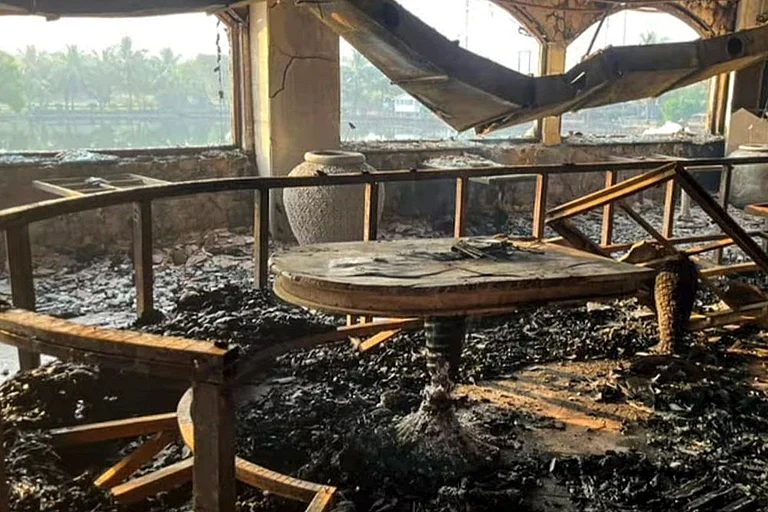Goa, a tourist haven with its picturesque beaches and diverse culture, now faces a pivotal moment in its tourism journey. At a recent gathering of Yuva Tourism Clubs near Panaji, held on the eve of World Tourism Day, Goa Chief Minister Pramod Sawant made an urgent call for collective efforts from the state’s youth to promote new and sustainable avenues of tourism. The gathering was a vital reminder that Goa's tourism future lies not in resting on the laurels of mass beach tourism, but in the innovation and active participation of its young generation.
Chief Minister Sawant stressed the role of Goa’s youth in creating avenues such as sustainable, wellness, adventure, and spiritual tourism. With over 1,000 students and youth representatives from across the state participating in the event, the message was clear: Goa’s tourism needs a new direction, and young ambassadors will play a central role in shaping this future. The establishment of Yuva Tourism Clubs marks an important step toward empowering local youth to skill, reskill, and upskill, preparing them for the many opportunities available in this sector.
“Yuva Tourism Clubs draw inspiration from Prime Minister Narendra Modi's vision of 'Vasudhaiva Kutumbakam' which means 'the world is one family'. This ethos promotes unity and peace through tourism. As India's tourism landscape evolves, it presents a golden opportunity for everyone to become global ambassadors," he said
The Promise of Regenerative Tourism
As emphasized by state tourism officials, Goa has become the first state in India to adopt regenerative tourism. This concept, which focuses on leaving a positive impact on destinations and fostering resilience, goes beyond mere sustainability. It encourages restoration—environmental, cultural, and communal—ensuring that tourism not only consumes but actively gives back to the ecosystem and local communities.
Director of Tourism Suneel Anchipaka noted that regenerative tourism is about environmental restoration, cultural preservation, and community empowerment. In other words, it’s about aligning the tourist experience with the long-term well-being of the destination, rather than exploiting it for short-term gains. For Goa, this approach is vital if the state hopes to address the challenges posed by decades of overtourism.
Overtourism and Environmental Degradation

According to the Goa Department of Tourism, tourism accounts for nearly 40 percent of the state’s GDP and provides employment for a large segment of the population. The steady flow of tourists supports various businesses, including hotels, restaurants, local artisans, and transport services. For many residents of Goa, tourism is more than just an industry—it's a vital source of livelihood.
However, these economic advantages come with certain challenges. The heavy reliance on tourism makes the local economy susceptible to fluctuations. Factors such as seasonal changes, global economic trends, and health crises can significantly affect tourism, resulting in economic instability.
Overtourism—when a destination is overwhelmed by visitors, affecting the quality of life for locals and deteriorating the environment—has long plagued Goa. Along with the pressures of mass tourism, environmental degradation and climate change-induced impacts are becoming increasingly evident. Rising sea levels, coastal erosion, and erratic weather patterns are all consequences that threaten Goa’s future as a tourist destination.
Tourism is both a blessing and a burden for Goa. The sector has been the backbone of the state’s economy for decades, yet it is also responsible for the loss of biodiversity, deforestation, and increased pollution levels. Local ecosystems, such as mangroves and wetlands, which act as natural barriers against flooding, have been under siege. These effects are compounded by climate change, intensifying extreme weather events that hit Goa’s coastal regions the hardest.
The Way Forward: Sustainable and Responsible Tourism
Sawant’s vision of creating young ambassadors for sustainable tourism could not be timelier. Goa’s youth have a unique opportunity to lead the state into a future that values responsible travel and environmental stewardship. The focus on wellness, adventure, and spiritual tourism offers new avenues that can attract visitors without overburdening natural resources.
The government’s push for skill development through Yuva Tourism Clubs is also commendable. By equipping the younger generation with the tools to innovate and lead in the tourism sector, Goa can create a workforce that is both competitive and conscientious. Emphasizing skilling, reskilling, and upskilling for careers in tourism ensures that the local youth have the expertise to navigate the rapidly evolving landscape of global tourism, while also safeguarding their heritage and environment.
Addressing Climate Change
Regenerative tourism offers a blueprint for mitigating the effects of overtourism while simultaneously addressing environmental degradation. Restoring ecosystems, investing in green infrastructure, and promoting eco-friendly practices should be the guiding principles of Goa’s tourism policies. Additionally, there needs to be stricter regulations on the number of visitors, especially in ecologically sensitive areas like the beaches and forest reserves.
Collective efforts by the state government, local communities, and the youth will be essential in combating climate change’s effects on tourism. Public awareness campaigns can educate both locals and tourists about the impact of climate change and the importance of conservation. In the long run, policy measures that limit resource consumption, encourage responsible behavior, and protect natural ecosystems will be crucial.
Goa’s tourism industry stands at a crossroads. The choices made today by the youth, policymakers, and the tourism sector will determine whether the state can continue to thrive as a tourist destination while protecting its rich cultural and natural heritage. With initiatives like Yuva Tourism Clubs, Goa is laying the groundwork for a new generation of leaders who will champion sustainable and regenerative tourism. By embracing these ideas, the youth of Goa have the potential to create a lasting legacy, making the state a global ambassador for responsible tourism and environmental stewardship.


























